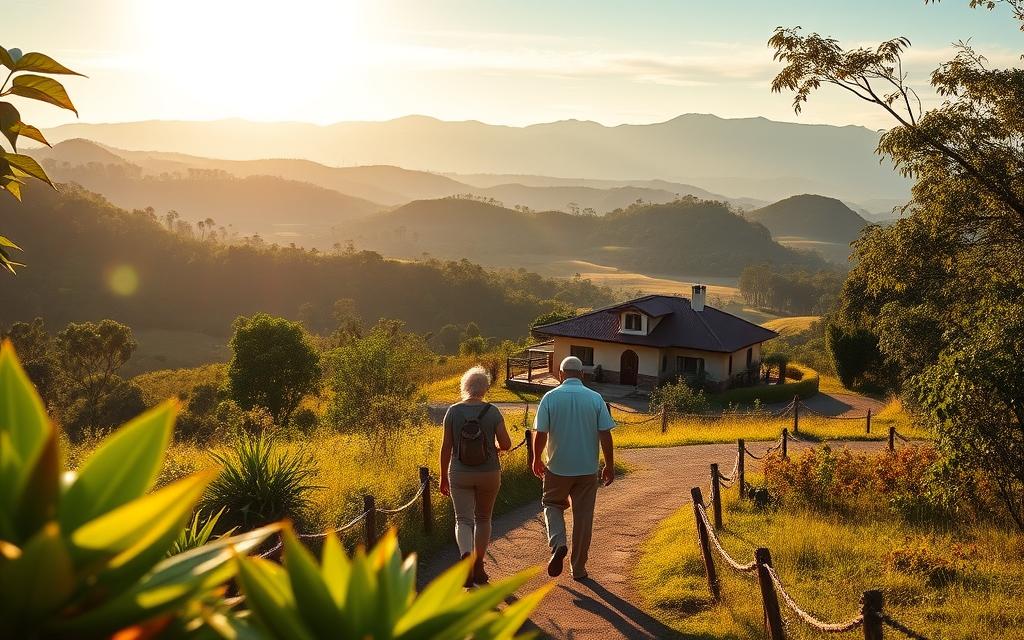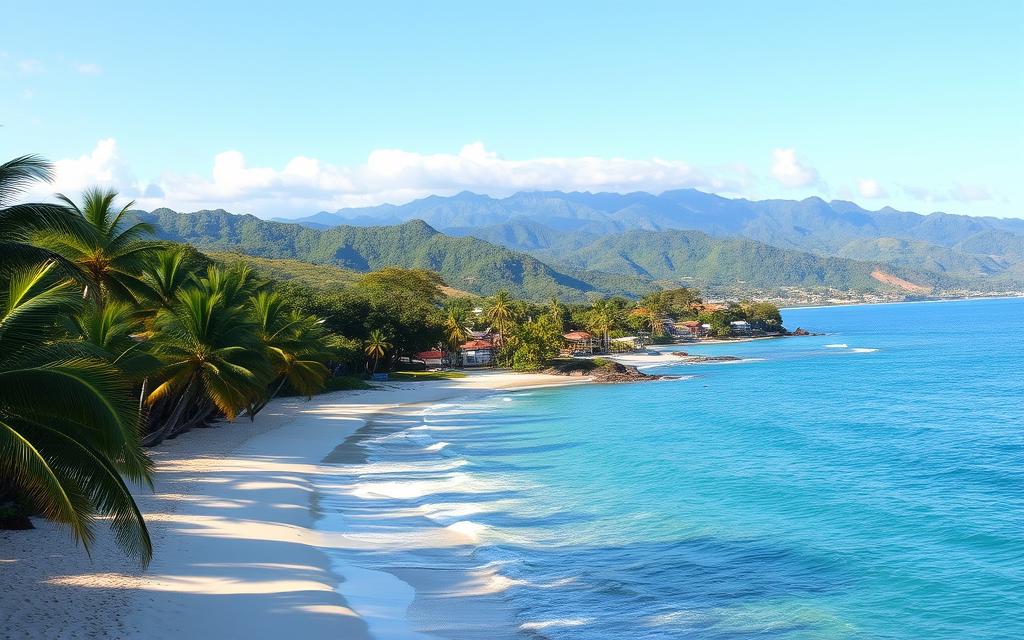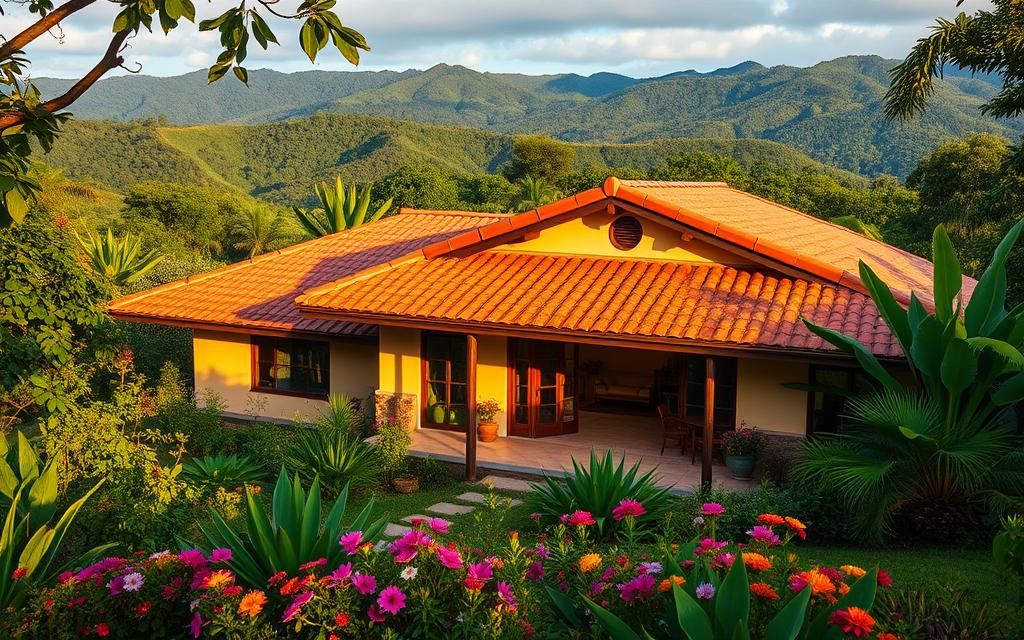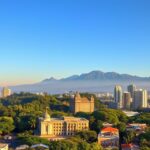Costa Rica Retirement Visa Step by Step: A Complete Guide

Did you know that over 70,000 U.S. citizens call this Central American paradise home? With its stunning landscapes, year-round mild climate, and welcoming culture, it’s no wonder so many choose to make this place their new home.
Living here offers more than just natural beauty. The region is known for its affordable cost of living, with many retirees thriving on a budget of $1,000 per month. From lush rainforests to pristine beaches, the environment is perfect for those seeking a slower, more fulfilling pace of life.
Residency here opens doors to excellent healthcare, vibrant communities, and a rich cultural experience. Whether you’re drawn to the bustling towns or the serene countryside, there’s something for everyone. Let’s explore how you can make this dream a reality.
Overview of Retirement in Costa Rica

Living here combines affordability with a high quality of life. This Central American gem is known for its stunning landscapes and welcoming culture. It’s no surprise that many choose to retire here.
One of the biggest draws is the favorable cost living. Many retirees find they can live comfortably on a budget of $1,000 per month. This includes essentials like groceries, utilities, and healthcare.
Modern amenities blend seamlessly with natural surroundings. Whether you prefer bustling towns or serene countryside, there’s something for everyone. This balance creates an ideal environment for a fulfilling lifestyle.
Safety and peace are also key factors. The country’s reputation as a safe haven attracts retirees from across the globe. This makes it a top choice for those seeking a tranquil retirement.
Residency options here are designed to improve quality of life. Programs cater to different needs, ensuring everyone can find a path that suits them. From healthcare to community, this destination offers it all.
Eligibility and Income Requirements

To qualify for residency, applicants must meet specific financial and eligibility criteria. The Pensionado program is a popular option for retirees, offering a straightforward path to residency. This program requires proof of a stable income to ensure applicants can support themselves while living in the country.
Pensionado Program Requirements
The Pensionado program is designed for retirees who can demonstrate a guaranteed monthly income. Applicants must show proof of at least $1,000 per month from a pension or retirement fund. This income must be documented through certified records, such as bank statements or official letters from the pension provider.
In addition to income proof, applicants must provide a range of documents. These include a completed application form, a criminal record certificate, and a copy of their passport. Meeting these requirements ensures a smooth application process.
Minimum Income Criteria
The minimum income requirement is a key factor in the application process. It ensures that retirees can maintain a comfortable lifestyle while living in the country. The $1,000 monthly threshold is designed to cover essential expenses, including housing, food, and healthcare.
Access to the healthcare system is another important consideration. Retirees can enroll in the public healthcare system, which provides affordable coverage. Private healthcare options are also available for those seeking additional services.
Meeting these criteria not only benefits the applicant but also supports the country’s economy. It creates a mutually beneficial arrangement, ensuring retirees can enjoy their new home while contributing to the local community.
Costa Rica retirement visa step by step

Navigating the process of obtaining residency in this Central American country is simpler than you might think. By breaking it down into clear steps, you can ensure a smooth and successful application. Let’s walk through the process together.
Step-by-Step Application Process
Start by gathering all required documents. These include proof of income, a criminal background check, and a copy of your passport. Make sure each document is up-to-date and meets the specific requirements of the program you’re applying for.
Next, submit your application at the nearest consulate or immigration office. Processing times can vary, but most applications take between 18 to 24 months. Be prepared to provide additional information if requested.
Once approved, you’ll receive a temporary residency permit. This allows you to live in the country while you work toward permanent residency. After three years, you can apply for permanent status, provided you’ve met all requirements.
Tips for a Successful Application
Double-check all documents before submission. Missing or incorrect information can delay the process. It’s also helpful to work with a local expert who understands the system and can guide you through each step.
Stay organized by keeping track of deadlines. Some requirements, like income verification, may need to be updated annually. Being proactive ensures your application remains in good standing.
Finally, familiarize yourself with the transition from temporary to permanent residency. Understanding this process early on can save you time and stress in the long run. For more details, check out our guide on the citizenship test for over 65 in.
Residency Options: Rentista, Investment, and Permanent

Exploring residency options in this tropical haven offers flexibility for diverse needs. Whether you’re seeking a peaceful lifestyle or planning to invest, there’s a program tailored for you. Let’s dive into the details of each option to help you make the best choice.
Rentista Residency Overview
The Rentista program is ideal for those with a stable income but not yet ready for retirement. Applicants must demonstrate a monthly income of $2,500 or deposit $60,000 in a local bank. This ensures financial stability while living in this beautiful country.
This option is perfect for individuals who want to enjoy the lifestyle without relying on a pension. It provides a straightforward path to residency, with renewals required every two years. After three years, you can apply for permanent status.
Investment and Permanent Residency Options
For those looking to invest, the Inversionista program requires a minimum investment of $200,000 in local projects or property. This option not only grants residency but also contributes to the local economy.
Permanent residency is available after maintaining temporary status for three years. This path is ideal for those who plan to make this their long-term home. It offers stability and access to all the benefits of living here.
Each option has unique document checks and renewal processes. Understanding these details ensures a smooth transition to your new life. Whether you choose Rentista, Investment, or Permanent residency, this destination offers a welcoming environment for all.
Detailed Application Process and Required Documents

Preparing your application for residency involves gathering essential documents and ensuring they meet specific legal standards. This process can seem overwhelming, but breaking it into manageable steps makes it easier to navigate. Let’s explore the key requirements and how to prepare them effectively.
Essential Documents Checklist
To apply successfully, you’ll need a comprehensive set of documents. These include a valid passport, recent photos, and a notarized letter of application. Additionally, a police clearance certificate from your country of residence is required to confirm a clean criminal record.
Birth certificates and marriage certificates, if applicable, must also be submitted. These documents must be authenticated with an apostille or verified by a consulate. Ensuring all paperwork is complete and accurate is crucial for a smooth application process.
Authentication and Translation Guidelines
Foreign documents must meet specific legal standards to be accepted. This includes obtaining an apostille or consular verification. Documents not in Spanish must be translated by a certified translator to ensure compliance with local regulations.
It’s important to note that some documents, like income verification, must be renewed every three years. Staying organized and proactive with updates will help avoid delays in your application. For more details on dependent applications, check out our guide on how to get residency for dependents.
Following these guidelines ensures your application meets all requirements. This attention to detail is especially helpful for expats compiling paperwork from various sources. By preparing thoroughly, you can enjoy a smoother transition to your new life.
Navigating Costa Rica's Healthcare and Living Costs
Understanding healthcare and living expenses is key to making an informed decision about moving abroad. Whether you’re planning to live here temporarily or long-term, knowing what to expect financially can help you budget effectively and enjoy a stress-free lifestyle.
Understanding Healthcare Coverage
Healthcare here is known for its affordability and accessibility. The public system, CCSS, provides universal coverage for residents, including expats. Contributions are based on income, making it a cost-effective option for many.
Private healthcare is also available for those seeking faster or specialized care. Many expats choose a combination of both systems to ensure comprehensive coverage. This flexibility is one of the reasons why living here is so appealing.
Cost of Living Breakdown
Living here is significantly more affordable than in many Western countries. A single person can live comfortably on $1,600 to $2,000 per month, while couples often find $2,000 to $2,500 sufficient. This includes rent, groceries, utilities, and entertainment.
Renting a two-bedroom apartment averages around $800 monthly, while utilities like water and electricity cost under $200. Transportation expenses, including petrol, are about $130, making it easy to get around without breaking the bank.
For those considering an investment in property, prices are lower compared to the U.S. A modest investment in a home can significantly enhance your quality of life. To learn more about the financial benefits of residency, check out our guide on whether residency here is worth it.
Understanding Tax Implications and Reporting
Navigating tax obligations as a U.S. citizen living abroad can seem daunting, but understanding the basics makes it manageable. We’ll break down the key differences between U.S. and local tax systems, helping you stay compliant while maximizing benefits.
US vs. Local Tax Obligations
U.S. citizens are required to file federal tax returns regardless of where they live. However, foreign-sourced income, such as Social Security or pensions, is not taxed locally. This dual system can be complex, but tools like the Foreign Tax Credit can help reduce your overall tax burden.
Local taxes are only levied on income earned within the country. For example, rental income or profits from a local business are subject to progressive tax rates ranging from 0% to 25%. Understanding these distinctions is crucial for accurate reporting.
Essential Documents for Compliance
To meet tax requirements, you’ll need to maintain specific documents. These include proof of income, bank statements, and records of healthcare contributions. For U.S. reporting, forms like the FBAR are mandatory if you hold over $10,000 in foreign accounts.
It’s also important to keep track of deadlines. U.S. tax returns are due annually, while local filings follow a different schedule. Staying organized ensures you avoid penalties and maintain good standing with both tax authorities.
Healthcare Contributions and Tax Breaks
Healthcare contributions here are based on income and typically range from 9% to 11%. These payments can often be deducted from your U.S. taxes using the Foreign Tax Credit. This credit provides dollar-for-dollar relief on taxes paid abroad, reducing your overall liability.
Retirees can also benefit from the Foreign Earned Income Exclusion, which allows you to exclude up to $130,000 of foreign income from U.S. taxes. These breaks make it easier to enjoy your new home without financial stress.
By understanding these tax implications and keeping the necessary documents, you can navigate the system with confidence. Whether you’re filing annual returns or managing healthcare contributions, staying informed is key to a smooth transition.
Choosing the Ideal Retirement Location in Costa Rica
Finding the perfect place to settle is a crucial part of the relocation process. The location you choose will shape your daily life, access to amenities, and overall happiness. With so many options available, it’s important to consider your personal and financial priorities when making this decision.
Top Expat Communities
Several communities stand out for their welcoming environments and excellent amenities. Tamarindo, for example, is a coastal paradise known for its vibrant expat scene and stunning beaches. Escazú, on the other hand, offers a more urban lifestyle with modern conveniences and proximity to the capital.
Quepos is a favorite among nature lovers, thanks to its close proximity to Manuel Antonio National Park. Heredia provides a quieter, family-friendly atmosphere with lush greenery and a cooler climate. Dominical is ideal for those seeking a laid-back, surf-friendly lifestyle.
Local Lifestyle and Amenities
Each location offers unique lifestyle options to suit different preferences. If you enjoy beachside living, Tamarindo and Dominical are excellent choices. For cultural attractions and modern services, Escazú and Heredia are hard to beat. Quepos combines natural beauty with a relaxed pace of life.
Proof of these benefits can be found in the testimonials of expats who have already made the move. Many highlight the friendly communities, affordable living costs, and access to healthcare as key reasons for their satisfaction.
By carefully considering your priorities and exploring these options, you can find the ideal location to call home. This decision is an essential part of the overall process, ensuring a smooth and enjoyable transition to your new life.
Practical Tips for a Smooth Transition to Costa Rica
Moving to a new country is an exciting adventure, but preparation is key to success. Whether you’re becoming a resident or exploring a retirement visa, these tips will help you navigate the process with confidence. From hiring experts to adapting to cultural changes, we’ve got you covered.
Engaging Immigration Professionals
Hiring a trusted immigration professional can save you time and stress. They understand the legal complexities and can guide you through the residency process efficiently. This is especially helpful when dealing with retirement visa requirements or social security documentation.
Experts can also help you meet deadlines and ensure all paperwork is accurate. Their knowledge of local systems ensures a smoother transition, allowing you to focus on settling into your new home.
Preparing for Cultural Changes
Adapting to a new culture takes time, but it’s easier when you know what to expect. Learn about local customs, traditions, and social norms to integrate seamlessly. This will help you feel more at home as a resident.
Language is another important factor. While many locals speak English, learning basic Spanish can enhance your daily interactions. It’s a small step that can make a big difference in your experience.
Finally, embrace the slower pace of life. This cultural shift is one of the most rewarding aspects of living here. With the right mindset, you’ll soon feel like a part of the community.
Common Challenges and How to Overcome Them
Relocating to a new country often comes with its own set of challenges, but with the right preparation, these can be managed effectively. One of the most common hurdles is the language barrier. While many locals speak English, learning basic Spanish can significantly ease daily interactions and help you integrate into the community.
Bureaucratic delays are another frequent issue. Residency applications can take between 6 months to 1 year to process. To navigate this, ensure all required documents are submitted within 180 days from the application start date. Working with a trusted immigration professional can also streamline the process and reduce stress.
Adapting to a new administrative system can be daunting. Understanding local procedures and requirements early on can save time and prevent frustration. For example, the Pensionado Program offers various discounts, including reduced public transportation fees and exemptions from import tax on household goods.
Family members, including children, may also face challenges during the transition. Community services and expat groups can provide valuable support, helping them adjust to their new environment. Proactive planning and leveraging these resources can make the relocation smoother for everyone involved.
Infrastructure constraints, such as occasional power outages or limited internet access in rural areas, can be managed by choosing locations with modern amenities. For more tips on settling in, check out our guide on what to do after getting residency.
By addressing these challenges head-on and utilizing available resources, you can ensure a successful transition to your new home. Preparation and adaptability are key to overcoming obstacles and enjoying a fulfilling life abroad.
Conclusion
Embracing a new chapter in life often starts with choosing the right place to call home. This guide has walked you through the essential steps to make this dream a reality, from understanding residency options to navigating healthcare and living costs. The blend of natural beauty, modern amenities, and a supportive expat community makes this destination a top choice for many.
Whether you’re drawn to the vibrant culture or the affordable lifestyle, this location offers something for everyone. Each residency program, from Pensionado to Rentista, provides unique benefits tailored to your needs. Thorough documentation and preparation are key to ensuring a smooth transition.
We encourage you to view this place not just as a destination but as a community where you can thrive. For personalized advice and to explore your options further, feel free to reach out. Learn more about dual citizenship requirements to take the next step toward your new life.


